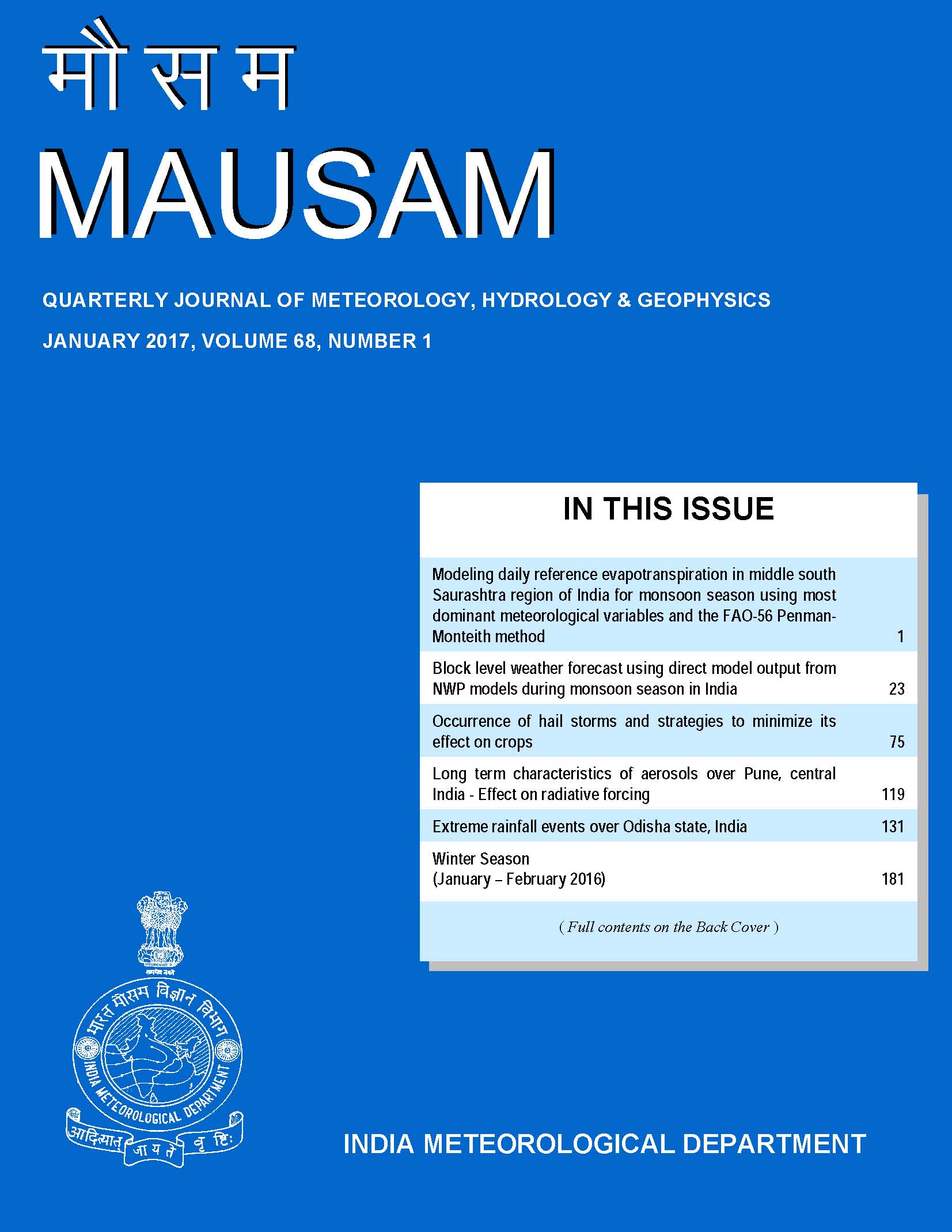Occurrence of hail storms and strategies to minimize its effect on crops
DOI:
https://doi.org/10.54302/mausam.v68i1.435Keywords:
Hailstorm, Crop damage, Synoptic situations, Agromet Advisory.Abstract
Among the extreme weather events hailstorm in recent past caused significant crop damage across the country. In 2014 and 2015 unseasonal rains and hailstorms during March and April damaged rabi crops as well as horticultural crops extensively in many parts of the country. In this paper, a detailed analysis of occurrence of hailstorm in four homogenous regions of India during past 35 years from 1981 to 2015 has been made, to find out the climatological and favourable synoptic aspects associated with hailstorms so that timely issuing of warning and Agromet Advisories could minimize the crop damage/loss. Maximum hailstorms were observed to have occurred in Maharashtra (31 years) during the period of study with highest occurrence of 11 days during 24 February to 14 March, 2014. Also Maharashtra is more prone to hailstorms than other States in the country with maximum probability of occurrence (91-95%) while the probability of occurrence (6-10%) is least in Gujarat, Chhattisgarh, Tamil Nadu, Tripura, Meghalaya, Sikkim and Nagaland. The significant synoptic situations associated with occurrence of hailstorms are found to be the north-south line of wind discontinuity causing convective activity and systems in westerlies. The information generated in this study was found to be very useful in minimizing crop loss through operational agromet services launched by the India Meteorological Department/Ministry of Earth Sciences in collaboration with the Agromet Field Units (AMFUs) located at State Agricultural Universities and institutes of ICAR and IITs under the project Gramin Krishi Mausam Sewa (GKMS).
Downloads
Published
How to Cite
Issue
Section
License
Copyright (c) 2021 MAUSAM

This work is licensed under a Creative Commons Attribution-NonCommercial 4.0 International License.
All articles published by MAUSAM are licensed under the Creative Commons Attribution 4.0 International License. This permits anyone.
Anyone is free:
- To Share - to copy, distribute and transmit the work
- To Remix - to adapt the work.
Under the following conditions:
- Share - copy and redistribute the material in any medium or format
- Adapt - remix, transform, and build upon the material for any purpose, even
commercially.



